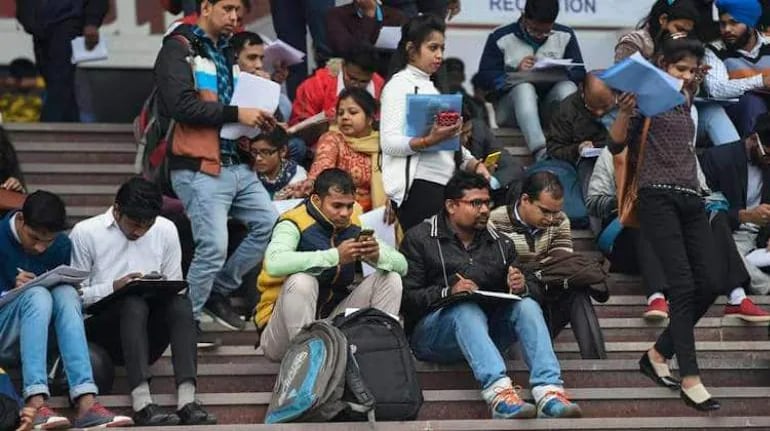Is it possible for India to create full employment in the country?

From an economic perspective, full employment does not indicate that everyone is employed. A decline in employment that goes beyond a specific threshold may result in pressure on wages and prices, which could lead to inflation. As a result, economists refer to this country as the “sweet spot,” when employment is nearly at capacity without raising prices.
It ends poverty and the potential for jobless people to lose motivation and skills. Generally speaking, social issues like crime and vandalism are brought on by unemployment. Governments profit from the decline in unemployment and the rise in tax revenue (income tax & VAT) paid by the more employed residents, which reduces the need for borrowing on the part of the government resulting in economic growth stimulation through all of these positive things.
Even though the government now aims to create 6 million jobs this fiscal year, the jobs lost during the pandemic and the K-shaped recovery have shown the structural instability and lack of resilience of the informal sector, an important portion of the economy.
The manufacturing sector’s share of India’s GDP has stubbornly stayed at 15%, and the declining employment elasticity of manufacturing investments amply illustrates the hard times this jobs paradigm faces in India. This will be made even more difficult by the manufacturing industry’s rapid increase in automation and digitalization.

Is it possible for India to create full employment in the country?
According to a People’s Commission on Employment and Unemployment research, India requires investments worth Rs 13.52 lakh crore annually, or around 5% of the country’s GDP, together with a “Right to Work” law to ensure full employment for its citizens.
The report noted that achieving full employment would involve big changes to the legal, socio-political, and economic spheres and could not be done in pieces.
A “Right to Work” law, according to the report, is also required to ensure citizens have a respectable standard of living. To create jobs, it also highlighted raising this expenditure by 1% of GDP annually over the following five years.
There are 21.8 crore people who, without counting those who receive help from the MGNREGA rural job guarantee program, are in dire need of employment. At the moment, 30.4 crore workers hold jobs.

It was shown that rising employment would rise both production and demand.
The paper added that this goes against the elite belief that full employment would be a zero-sum game, saying that the lack of resources for achieving full employment is a wrong argument because it can be self-financing.
While new technology being developed in developed countries is suitable for their purposes, it may not be good for a developing country like India.
Higher technology is meant to increase a company’s profitability. However, it also lessens employment prospects. Therefore, it was argued, those that who import technology and cut employment should pay a tax that can be used to finance employment.
What is “Right to work”?
The concept of the right to work holds that people should not be prevented from engaging in productive employment or from working. The International Covenant on Economic, Social, and Cultural Rights includes the right to work, which is treasured in the Universal Declaration of Human Rights and acknowledged in international human rights legislation since it focuses on economic, social, and cultural development.
Therefore, the prime requirement for life is the “right to work.” One must labor to earn money to have the necessities of life, like food, water, clothing, shelter, and more.
In the Indian Constitution, the “right to work” is not expressly recognized as a fundamental right. Because it is expressly prohibited under Article 41 of Part IV of the Constitution, it is not enforceable in court (Directive Principles of State Policy). The “right to work” has been referred to be a “basic right” by a court of law, despite that it is not specified in Part III (Basic Rights) of the Constitution.

The employment situation of India
Despite claims that India has the fastest-growing economy in the world, the lack of job growth has raised concerns that the benefits of a young population dividend would go unused. Fortunately, according to the most recent data from public and private institutions, the tide appears to be turning, slowly but definitely.
The employment situation has not changed much as a result of reports, but they do show an upward trend that may be accelerated by government initiatives to increase job creation. It is no accident that many projects have just been started to increase the number of employment accessible to the country’s youth. The most important one is the initiative to fill all of the unfilled positions in departments and ministries to create one million new government jobs.
Lowering entrance barriers and improving high-quality job conditions, is a public policy issue that needs to be handled carefully. Even though India has the youngest population in the world, just 2% of its workers are competent, compared to 96% in South Korea, 45% in China, 50–55% in the USA, and 74% in Germany.
Other ways to increase the employment rate are:
- Education: One strategy to increase employment prospects in India is through better education, which creates human capital and promotes economic growth and development. Wider employment options are available as a result of improved education.
- Industries: The emergence of local industries and MNCs broadens employment options while raising living standards.
- Credit facilities: Low-interest loans and other credit options should be made available for starting one’s own small business and improving agricultural infrastructure.
edited and proofread by nikita




